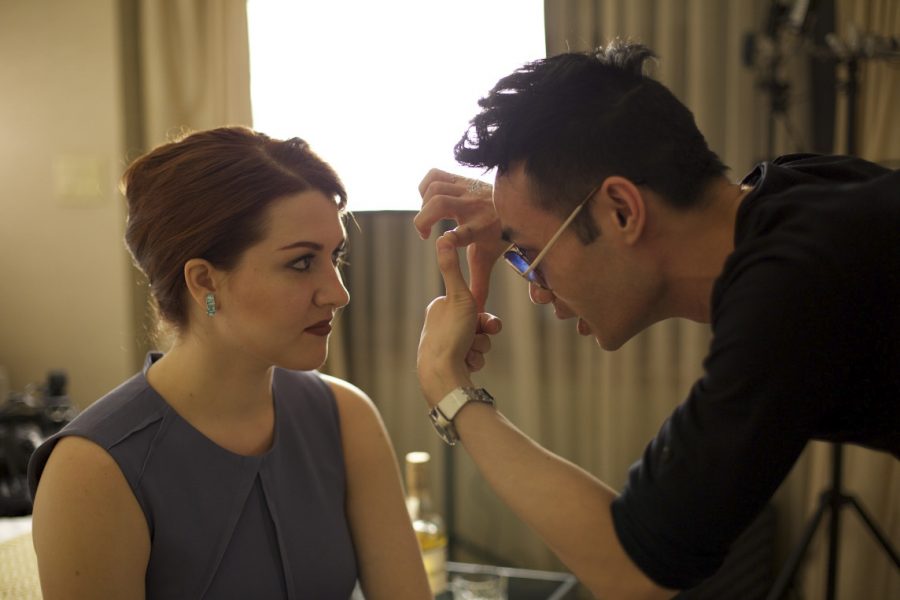‘Viral,’ a Collection of NYU Talent
Photo Courtesy of David Tyson Lam
A film saturated with NYU alums, “Viral Beauty” takes a look at what fame means in the digital age.
October 17, 2016
The premise of “Viral Beauty” is one that, by now, is familiar to almost anyone who identifies (or is identified) as a millennial: Marsha Day, played by NYU alum Casey Killoran, is abruptly thrust into the limelight of social media fame after her dating ad goes viral. The film is a dark comedy, directed by David Tyson Lam, another former NYU student. With the help of a swarm of YouTubers and Perez Hilton, the plot unfolds into a fascinating look at what the consequences of fame in the digital age can be. Killoran and Tyson Lam recently sat down with WSN to give a blow-by-blow primer for the film.
On the comedic and serious aspects of the film
Casey Killoran: We never really went into it with a “this is going to be a satire comedy” mindset. There are plenty of times in the movie where the humor drops, and it gets extremely serious. It is very light and fun and entertaining to watch. It’s fast paced, and it doesn’t feel like a 90-minute film; but it leaves the audience thinking about it once it’s over.
On the film’s target audience
CK: I think that when we started this project, we were telling a story that we are experiencing first-hand, so it’s definitely something that we relate to millennials and Generation X as well. We told the story because it was something that people we knew would really like, but it definitely is also more of a broad, global idea too.
David Tyson Lam: We’ve shown it to people who are in their 50s, we’ve shown it to people who are in their mid-30s, we’ve shown it to people who are in their 20s. I think the youngest that we showed it to were maybe like 16, 15. And they each got something from it. So we know that there are enough jokes and enough kind of poignant moments that it’s going to hit audiences in different places. I guess you just have to like comedy.
CK: The quirky, darker sense of humor is probably where it’s gonna land at the best.
On their favorite scene
DTL: There’s this scene where the main character has a mental breakdown on a live chat and in that scene, for the sake of realism and really wanting to see what Casey’s natural reaction would be, I asked her to eat real cat food. I think the kind of meta-reality that came out of that was, “Oh my god this is a real person eating real cat food and it is actually mesmerizing,” and so I would say that for me that was the funnest thing to shoot and also kind of controversial as well. I don’t know if Casey liked eating the cat food.
CK: I won’t say that that was my favorite (laughs).
On where the film succeeded and failed
DTL: The film jumps between so many screens. It goes back and forth so many times between online and then reality, but when you watch it you’re not jarred by it. It actually feels cohesive. I think that’s directly a result of the fact that in this generation we go naturally every day from screen to screen. We’re on our phones and then our tablets and then we’re back in real life. We’re constantly through our lens. We are accustomed to moving dynamically through different realities, and so I think the film really captures that well. But if we had a second go at it, I would have loved to have had more time to just sit and plan.
A version of this article appeared in the Monday, Oct. 17 print edition. Email Natalie Breuer at [email protected].
























































































































































